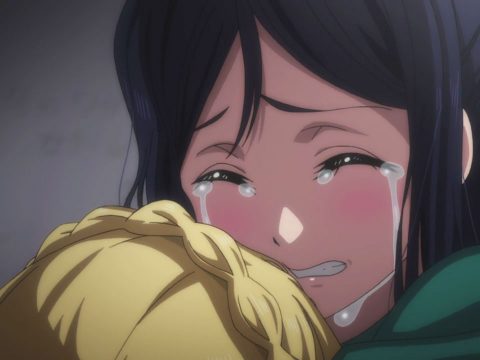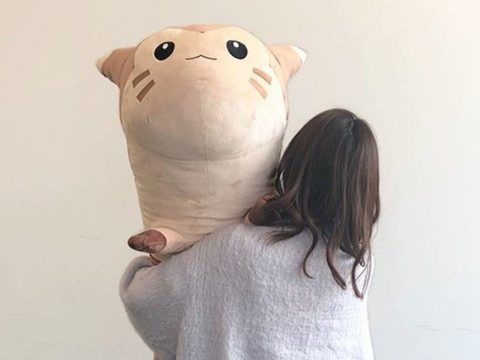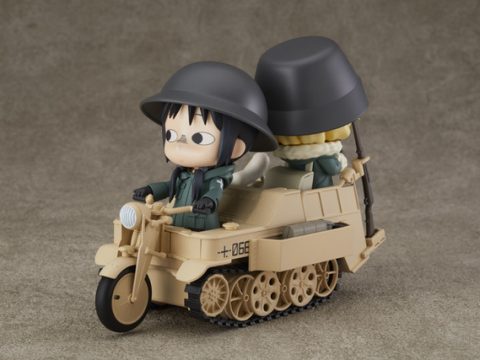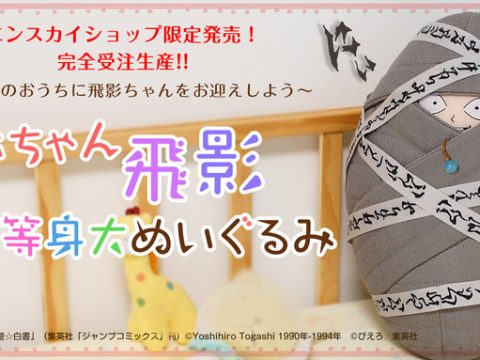 I’ll be honest: at first glance, this doesn’t seem like the kind of place one would come to pimp their robot ride. I’m being led through what could be any office in the center of downtown Tokyo. There is nothing here to distinguish it from any of thousands just like it: beige cubicles, desks stacked with books and the occasional gashapon figure, computers, people hunched over their mice and keyboards, steaming mugs of green tea and instant ramen at the ready.
I’ll be honest: at first glance, this doesn’t seem like the kind of place one would come to pimp their robot ride. I’m being led through what could be any office in the center of downtown Tokyo. There is nothing here to distinguish it from any of thousands just like it: beige cubicles, desks stacked with books and the occasional gashapon figure, computers, people hunched over their mice and keyboards, steaming mugs of green tea and instant ramen at the ready.
It isn’t until we turn a corner and plunge into the “reference room” that it hits me like a rocket punch to the solar plexus: I’m standing in the motherland of Japanese toy design. The giant glass display cases here are filled with dozens upon dozens of robot toys. Vehicles from Machine Robo Rescue. Robots from Hurricanger, Abaranger, and Magiranger. “Henshin belts” from various Kamen Rider series. All of them took form here. And here they remain, silently standing guard over the people that created them. I should have expected nothing less from a company whose stated mission is “harnessing the power of play.”
 Then there are the walls. They’re covered with an intricate, branched timeline showing three decades worth of heroes and “mecha” from the various incarnations of the Super Sentai (aka Power Rangers) and Kamen Rider series. Most of them were designed by the people who work here. It looks like an otaku version of the charts used to explain the evolution of species in high school biology classes, or the projected outbreak pattern of some exotic new virus. “There’s only two copies of that in the world,” remarks my guide, president Masayuki Kondo. “The other’s with Disney in the United States.”
Then there are the walls. They’re covered with an intricate, branched timeline showing three decades worth of heroes and “mecha” from the various incarnations of the Super Sentai (aka Power Rangers) and Kamen Rider series. Most of them were designed by the people who work here. It looks like an otaku version of the charts used to explain the evolution of species in high school biology classes, or the projected outbreak pattern of some exotic new virus. “There’s only two copies of that in the world,” remarks my guide, president Masayuki Kondo. “The other’s with Disney in the United States.”
Founded in 1981, Plex International Design is quite possibly the most famous Japanese toy company you’ve never heard of. Plex’s very first project was designing a series of transforming vehicles called “Machine Robo”-released several years later in the United States as the “GoBots.” And they’ve been going strong ever since.
A subsidiary of current industry leader Bandai Namco, Plex’s original founders were veterans of the giant robot fad that swept Japan in the 1970s. Its small size- just 47 employees at present-belies that fact that it is a powerhouse of creativity and the foundry where some of Japan’s top characters have been conceived. Indeed, like robot-obsessed versions of the The Forty-Seven Ronin, the crack team of designers who work for Plex have pledged faithfulness to a singular, unwavering master vision: creating some of the greatest toys the world has ever seen.
 To understand the role of a company like Plex, you first need to understand the complexities of bringing kids’ programming to Japanese airwaves. It isn’t easy or cheap to produce a live-action or animated series, and so Japanese studios often turn to corporate sponsors to help foot the bill. The sponsor recoups their investment by selling merchandise of the various characters and vehicles that appear in the shows. Quite often they hedge their bets by actually designing them themselves. Whenever toy manufacturer Bandai-Namco sponsors a show, they call on Plex to draft the designs for the characters and vehicles that will appear in it. If this sounds heavy handed, you’re getting the wrong idea. With more than a quarter century of experience under its belt, when Plex talks “mecha,” animators and directors listen.
To understand the role of a company like Plex, you first need to understand the complexities of bringing kids’ programming to Japanese airwaves. It isn’t easy or cheap to produce a live-action or animated series, and so Japanese studios often turn to corporate sponsors to help foot the bill. The sponsor recoups their investment by selling merchandise of the various characters and vehicles that appear in the shows. Quite often they hedge their bets by actually designing them themselves. Whenever toy manufacturer Bandai-Namco sponsors a show, they call on Plex to draft the designs for the characters and vehicles that will appear in it. If this sounds heavy handed, you’re getting the wrong idea. With more than a quarter century of experience under its belt, when Plex talks “mecha,” animators and directors listen.
As the film and television studios generally get all the credit for the series they produce, many fans aren’t aware of the huge part Plex plays behind the scenes in creating the characters that appear within them. The Power Rangers series of shows? Basically everything from 1979’s Battle Fever J on. Kamen Rider? Every single one from 1990 on. Anime robots? Anything Toei produced from the mid-70s on. Remember the “Godaikin” toys sold on American toy shelves in the 1980s? All of those came from Plex’s design tables, too.
 In a country where being a full-time robot designer is considered a respectable (if quirky) occupation, Plex is home to some of the best of the best. At its heart it is a toy SWAT team of sorts, a laboratory full of mad scientists spending their days synthesizing the conceptual DNA that brings Japan’s fantasies to life. Content to remain in the shadows behind the scenes, Plex crafts everything from the look of the costumes for the human characters to the giant robots they pilot, all of it carefully engineered to look cool on screen while being possible to mass-produce as toys and other merchandise. They have even published a series of “how to” guides in both Japanese and English, giving amateur robot designers the conceptual design tools they need to sketch airplanes, cars, and tanks that transform into titanic warriors of justice.
In a country where being a full-time robot designer is considered a respectable (if quirky) occupation, Plex is home to some of the best of the best. At its heart it is a toy SWAT team of sorts, a laboratory full of mad scientists spending their days synthesizing the conceptual DNA that brings Japan’s fantasies to life. Content to remain in the shadows behind the scenes, Plex crafts everything from the look of the costumes for the human characters to the giant robots they pilot, all of it carefully engineered to look cool on screen while being possible to mass-produce as toys and other merchandise. They have even published a series of “how to” guides in both Japanese and English, giving amateur robot designers the conceptual design tools they need to sketch airplanes, cars, and tanks that transform into titanic warriors of justice.
Plex reigned supreme throughout the 1980s and 1990s, but children’s tastes have increasingly shifted from toys to video games and Pokemon cards. Fluidly transforming itself like one of its own robot designs, Plex has managed to stay relevant by increasingly targeting adult fans and collectors. But that doesn’t mean kids are out of the equation. “There will always be a demand for transforming robots,” says veteran designer Tetsuya Aoki. “Their puzzle-like nature has an enduring appeal.”
Masayuki Kondo agrees. “I believe children need the experience of playing with physical toys to stimulate their bodies and minds. ‘Virtual’ toys in the form of videogames and real-world toys will continue to co-exist. We plan to develop hybrid toys that bridge the gap between everyday electronic gear, the Internet, and traditional forms of toys.”







